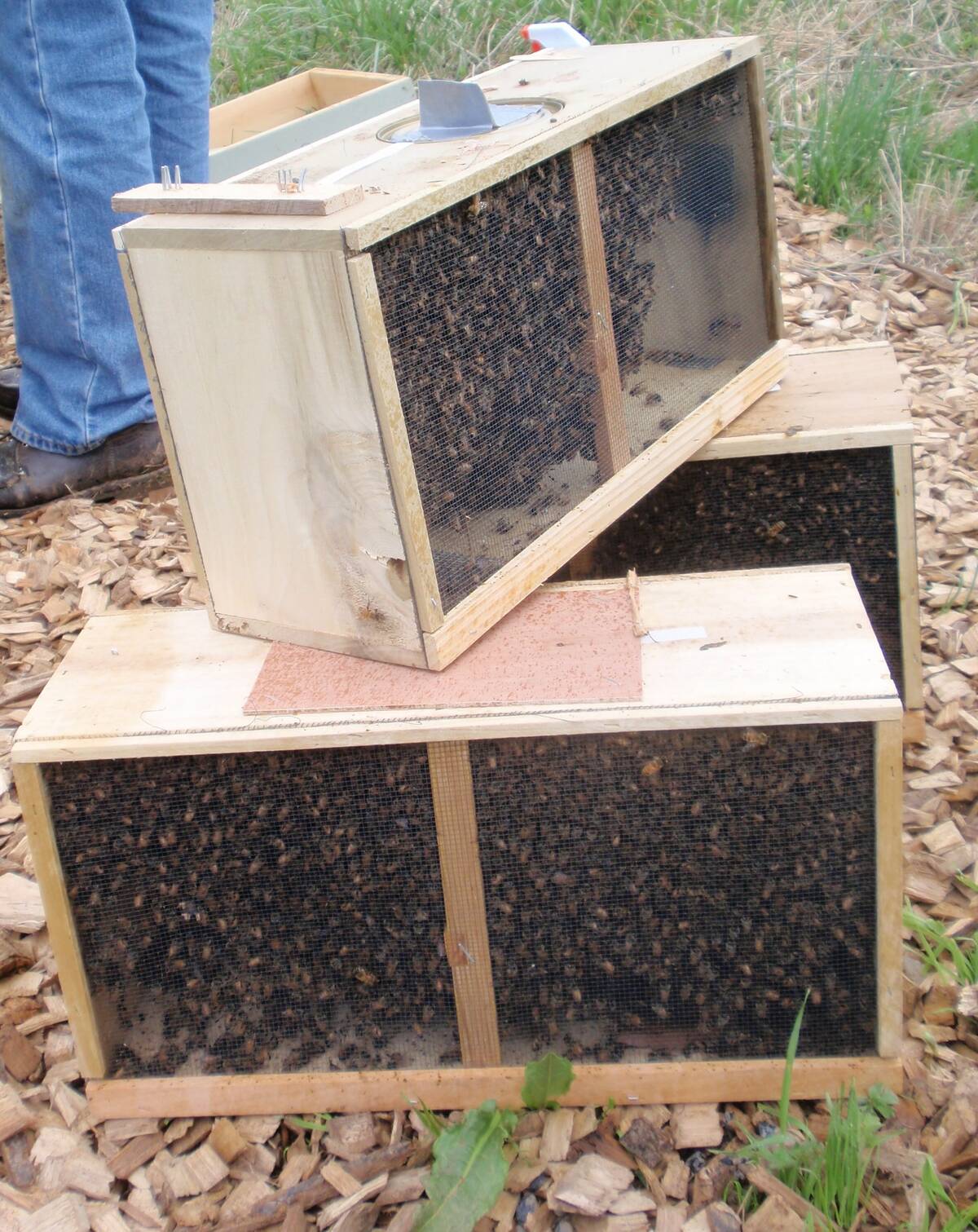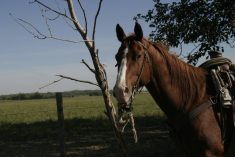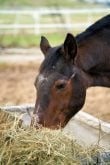There is a popular trend in the horse industry marketing the idea of ‘basic joint maintenance,’ with marketing campaigns that emotionally drive the idea that various products can bestow a protection against arthritis.
It might be an intravenous or intramuscular injection or an oral supplement but the pitch is similar — these products claim to forestall the ‘assumed inevitable’ of arthritis, which is increasingly common in the horse population.
The concept of significantly influencing the development of arthritis through a pharmaceutical ‘joint maintenance’ program fails to acknowledge that joints do not exist in isolation from the whole horse. And the horse, itself, does not exist in isolation from its environment.
Read Also

Canadian beekeepers call for regulatory accountability
Beekeepers say the Canadian Food Inspection Agency should restore U.S. packaged bee shipments, claiming the agency isn’t following evidence.
As such, ‘joint maintenance’ programs are limited in their abilities to address the solutions and conditions that allow the joints to maintain their own state of health and integrity. The majority of these solutions and conditions exist outside the scope of direct joint treatment, rather they lie within management practices of the horses themselves.
Whenever a joint becomes problematic (with the exception of an overt injury or infection), the makings of the arthritic outcome can generally be recognized in hindsight.
Many horse owners become frustrated and overwhelmed with the complexities of arthritis when it is diagnosed in their horse. This is certainly understandable as often the diagnosis of arthritis may seem to appear ‘out of nowhere.’ Yet this is rarely the case, as many horses that develop arthritis share common lifestyle and environmental conditions with events, practices and stressors in their lives that erode the ability of the joint or joints to attain and maintain their natural state of health.
Pharmaceutical solutions are perceived to be an elite standard of joint care — yet many show little evidence for modifying long-term effects of joint disease, such as stopping, slowing or reversing the disease within the joint. If the conditions that created the inflammatory degeneration of the joint are not addressed, the destructive forces will still be at play, once again recreating and advancing the damage.
Horse owners have more control in the measures that influence joint health than they realize and they can make significant contributions to the horse’s life every day towards maintaining the health and integrity of the joints.
Firstly, balanced nutrition with adequate mineralization is key to building a sturdy and resilient musculoskeletal foundation with its robust cartilage development. The developing cartilaginous and bony structures of the young growing horse are particularly sensitive and vulnerable to dietary influences in their formative years. The immature skeleton of the growing horse is also particularly susceptible to demanding training schedules which can physically overwhelm the young body and set the stage for inflammation and later arthritis.
Overconditioning is particularly problematic for joint function as extra weight amplifies both static and dynamic forces. Therefore recognition of an appropriate and healthy body weight across all age groups of horses is key to joint health.
Key for all ages of horses as well is pasture turnout, for innate movement is beneficial to sustaining ongoing healthy joint motion. Healthy joint motion is of utmost relevance to the integrity and health of the joint tissues as joints were designed to biologically and biomechanically function in a very articulate and particular mannerism.
Although analogies are not quite perfect this concept is similar to tire alignment on a vehicle. If the wheels are not sitting on the axle straight and balanced, the tires will wear unevenly, wearing more on the inside or perhaps maybe the other way around, wearing more on the outside.
Just changing the tires will not resolve the problem as the wear pattern will return. Therefore it is necessary to fix the alignment of the wheels on the axles.
This similar idea of alignment is necessary in the horse’s body due to the fact that joint motion is determined by local and distant biomechanical force vectors and kinematic chains in the whole body. Unequal and unnatural musculoskeletal forces place the horse’s joint at risk for improper angles of flexion and extension and thus inappropriate loading of joint surfaces which initially results in inflammation and later becomes arthritis. These incongruencies in movement may be seemingly small and insignificant yet left unattended create micro-stress on the joints and their surrounding tissues undermining their integrity with every footfall.
Proper body carriage from front to back, side to side and across the diagonals creates a lightness of the forehand, straightness and symmetry of the body that encourages proper alignment and functional relationships between partnering joint surfaces. This process begins by respectfully starting the youngster at a sensible age and properly preparing the horse to carry the rider and meet the athletic demands that lie ahead. Every training program leaves an imprint on the horse’s musculoskeletal body and thus its movement patterns.
Asking horses to continually engage in repetitive movements deemed through practice and show schedules puts increasingly more stress and strain on specific joints. Thus the arthritic outcome of horses participating in certain sporting events occurs in highly predictable and repeatable locations.
Sensible exercise programs which include rest, proper warm-up and cool-downs, proper hoof care and suitable footing surfaces are variables that influence the health and plasticity of the soft tissues that directly stabilize the joints. Instability of the connective tissue networks which surround the joint are detrimental and injurious to the joint surfaces themselves exposing them to forces they are ill prepared to accommodate.
Ultimately it is sound management practices which make a lasting impression on the well-being of the horse’s joints.
















